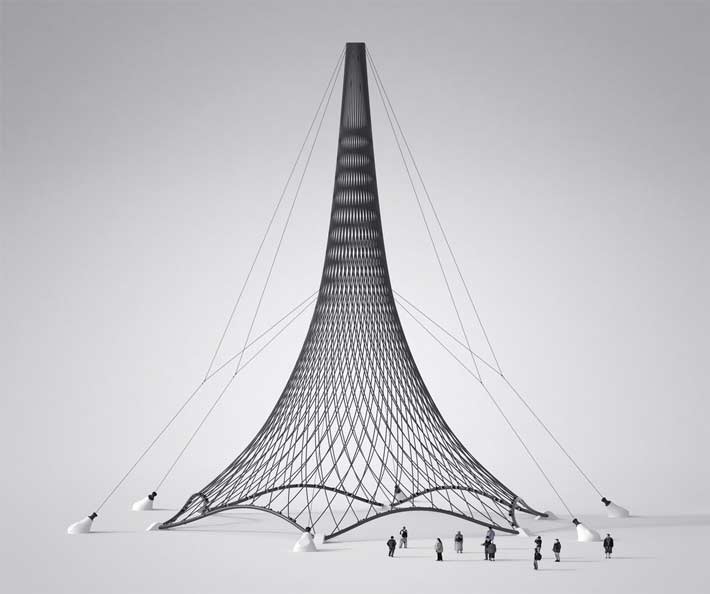
NIMBY activists would be placated because the M.I.T. professor could probably design the tower to curl up into a cute little kitten if one of the guy wires were cut. (Rendering: Justin Metz)
An assistant professor of design research at M.I.T. has a unique way to rethink a cell tower’s essential infrastructure by programming building materials — wood, textiles, and synthetic fibers — to respond automatically to external stimuli like heat, cold, light, wind or water.
He asks of the next-gen cell tower: “How can we make it change shape, bend, twist, twirl, expand, so the cell tower can adjust to the weather, time of use, time of day — or if there’s a big event nearby?”
Well, we hate to inform him that his cell tower designs in The New York Times will not work since cell site structures, by design, have to be at a fixed location with a small and finite twist and sway allowance.
Otherwise, the antennas on the sexy Slinkys would therefore be required to work part-time as Zumba instructors on amphetamines in between their full-time job of transmitting and receiving.
The article identifies that “from a taller tower to a squat canopy, the tower can transform in various ways, physically stretching toward zones of higher usage or shying away from inclement weather,” the perfect avant-garde solution for upscale NIMBY activists.
And excellent for the many hundreds of contractors who have been forced to put into their employment agreement that their tower technicians will receive triple time if they have to climb in tepid temperatures or slight shower mistings.

















